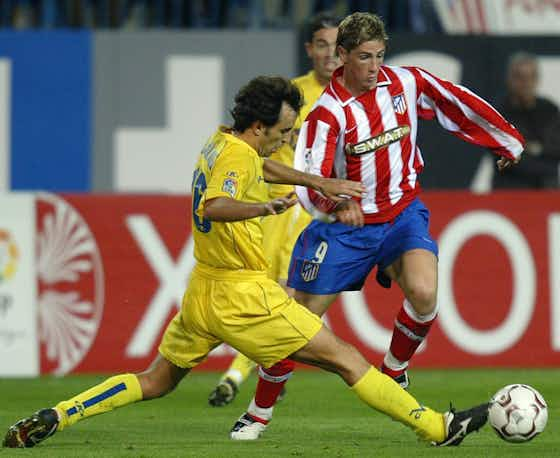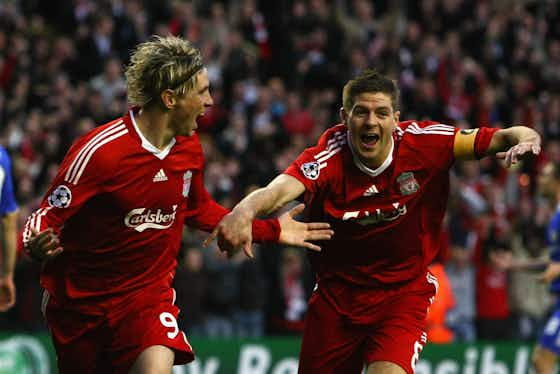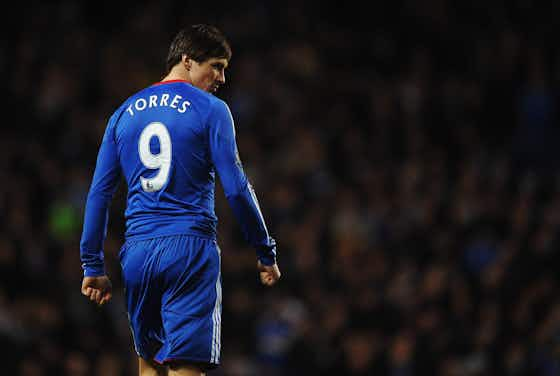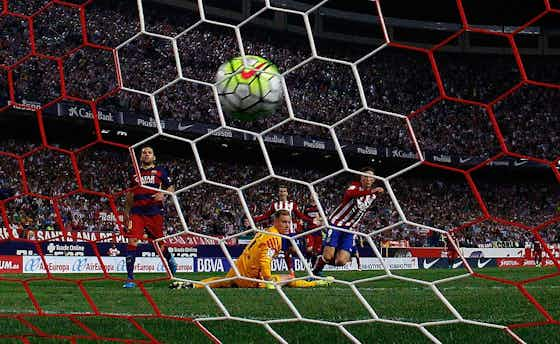El Arte Del Futbol
·10 July 2019
The Phenomenon called El Niño – Looking back at Fernando Torres’ memorable journey from Madrid to Tosu

In partnership with
Yahoo sportsEl Arte Del Futbol
·10 July 2019

By Bhargav Joglekar
A couple of weeks ago, Fernando Torres announced that he would be retiring from football at a press conference he called in Tokyo. He had informed his fans about the press conference a couple of days in advance via an Instagram post. Immediately, speculation started circling about what it might be. Was he going to stay in Japan for another season? Was he going to move to another country? I hoped it would be something of that sort; but deep down in my heart, I knew. I knew he was going to call it a day in professional football.
I knew for a long time that such a day would come, and I was dreading it. Being a Liverpool fan, I fondly remembered his days in the red and what a natural goalscorer he was during his time at Anfield.
Fernando Torres was the player who made me fall in love with football. You couldn’t hate the guy, period. In his prime, he was one of the deadliest strikers not only in the Premier League but across the world. A crowd-puller in all ways imaginable. May it be his superb technique, pin-point accurate or his perfect finishing. In just three and a half years at Liverpool, El Niño, as he was fondly called, went down in history as an Anfield legend.
81 goals in 142 games speak for themselves on how good a player the Spaniard was. I would be lying if I said I would’ve been a Liverpool fan today if Torres never played for the Reds.
In the larger scheme of things, the years between July 2007 and January 2011 were not the best times to be a Kopite, with Liverpool going trophyless during that period. Not as good as the 2 seasons before that, but not as worse as the two which followed. These years would’ve quickly been left in the past, as a blip in the club’s grand old history, if not for Fernando Torres. The long-locked striker gave the club an identity during his time on English shores.
Born in Madrid, the perfect story for many would’ve been Fernando Torres lighting up the historic Estadio Santiago Bernabeu. But the young Fernando identified with the red side of Madrid, after his grandfather, a passionate Atletico Madrid supporter took him to the Vicente Calderon with him. His bond with the club strengthened when he joined the Rojiblancos’ academy at the age of 11. After training with the academy for 4 years, Torres signed his first contract with Atleti in 1999.
He made his professional debut in the 2000-01 season for Atletico Madrid, back when they were in the Segunda Division. His debut came during the business end of the campaign and the 17-year-old scored in only his second game for Atletico against Leganes, having come on as a substitute. They narrowly missed out on promotion that season.
The following season, Atletico managed to get promoted to the Primera Division under manager Luis Aragones. However, Torres had a quiet campaign, having netted only 6 times in 36 games. Aragones kept faith in the young Madrileno; and he shined in his first La Liga campaign, netting 13 goals in 29 as Los Colchoneros finished the 2002-03 season in a respectable eleventh-spot on the table.
Within a season, Torres had gone from being a nobody to one of the hottest prospects in Spain. His performances impressed many across Europe, and he became the subject of a failed £28 million bid from Chelsea owner, Roman Abramovich. It doesn’t sound like much in today’s market, but it was a big deal back then. Barcelona and Milan were rumored to be interested in him, while in May, reports emerged of a Juventus offer that involved €15 million-plus Uruguayan striker Marcelo Zalayeta. How would the young superstar fare after a breakthrough season and spicy transfer gossip?

The answer was upwards, and only upwards. In the 2003-04 season, Torres bettered his league tally to 19 goals, becoming the joint third-highest goal scorer at the end of the campaign. He also became the youngest player ever to captain Atleti. His contributions were vital for his beloved club as they managed to improve their position in the table from the previous season, hoping to become a mainstay in the La Liga once again.
In the summer of 2004, Torres made the Spain national squad for the 2004 UEFA Euro in Portugal. His first start of the competition was in a must-win game against the hosts. Torres played well but failed to score, hitting the post in the late stages of the game.
Atletico Madrid’s upward trajectory in the league came to a halt in the 2004-05 season as they finished 11th in the table and scored only 40 goals, with 16 of them coming from the 20-year-old Torres. But the highlight for Atleti that season was their young hero’s antics at Camp Nou in February 2005. The precocious forward left Cule legend Carlos Puyol for dead en route to scoring a mesmerising brace to give Los Rojiblancos a famous 2-0 win over the eventual champions, Barcelona.
In the summer of 2005, Chelsea were once again interested in signing Torres as competition for Didier Drogba, but Atletico President Enrique Cerezo stated that they had ‘no chance’ of signing him. Torres kept his head down and focused on his game as his stock improved with every passing season. He was also the leading goal-scorer in the 2006 FIFA World Cup qualifiers for La Roja with 7 goals from 11 qualifiers.
In the summer of 2006, during the season of the FIFA World Cup, Torres made his talents known across the world. El Niño scored on his World Cup debut in a 4-0 demolition of Ukraine. He followed it up with a brace against Tunisia in the following game and ended the World Cup as Spain’s joint top scorer (with David Villa) with 3 goals. After the World Cup, he stated that he had turned down offers from Newcastle United and Chelsea to play in the Premier League.
Torres continued at the Vicente Calderon for the 2006-07 season and was yet again leading the scoring charts for the Madrid side that season. Atletico managed to finish 7th in the table, bettering their record from the previous campaign. However, Torres’ consistent habit of scoring goals meant that transfer speculation continued throughout the season. Chelsea remained interested and there were other clubs too who wanted
However, a new club had entered the fray to sign the 22-year-old. English giants Liverpool were desperately trying to secure the services of the Spanish striker and eventually had a bid of around £20 million accepted, shipping Anfield fan-favourite Luis Garcia to the Calderon. Personal terms were agreed and on 3rd July, Torres passed the medical at Melwood. He returned to Madrid the following day to hold a press conference to announce his departure from the Colchoneros and proceeded to sign a six-year deal for Liverpool.
More articles on Liverpool here
Torres became the club’s most expensive signing ever at that time. This was bold from Liverpool manager, Rafael Benitez whose previous big-money strikers, Djibril Cisse and Fernando Morientes had failed to justify their price-tag.
At Liverpool, Torres transformed from a youngster full of promise to a world-class forward, arguably head and shoulders above the rest of the best in the Premier League. His huge price meant that he was always under pressure to perform, and boy did he.
Any doubts that the people of England had about him were squashed after his home debut, against Chelsea. Receiving the ball on the right-flank, Torres took on Chelsea’s Tal Ben-Haim and left the Israeli in the dust, proceeding to slot the ball past Petr Cech with pin-point accuracy near the far post. How could you not think of the recently departed Arsenal man Thiery Henry when watching a man in red open up his body and find the far corner?

Torres went on to have a historic debut season for Liverpool, scoring 33 goals across all competitions, with 24 of them in the league; and became the first person since Robbie Fowler in the 1995-96 season to score 20 league goals for the Reds. This included three hat-tricks, the most by any foreign player in his debut season in England, eclipsing the Dutch great, Ruud Van Nistelrooy.
That was not it. Torres also became the first Liverpool player since Jack Balmer in 1946 to score hat-tricks in two consecutive home games, netting three each against Middlesborough and Reading. The El Niño of 2007-08 season was surely one for the ages, terrorizing defences and stamping his authority in arguably the world’s most competitive league.
Torres was nominated for prestigious accolades such as PFA Young Player of the Year and PFA Player of the Year award but was unlucky to miss out on both, eventually won by Cesc Fabregas and Cristiano Ronaldo respectively. He did, however, make the PFA Team of the Year. On 4th May, Torres scored his final goal of the season, in a 2-0 win against Tottenham Hotspur. This equaled the record of Anfield legend Roger Hunt of scoring in 8 consecutive games.
If characteristic sentimentality hadn’t been enough to cement his place in Liverpool hearts, quality on the pitch had done that within his first year at the club. Liverpool had a world-beater of a striker, for the first time in the best part of a decade.
Torres carried his superb run of form into the UEFA European Championships held in Austria and Switzerland during the summer of 2008. In the first game of the tournament, Torres superbly set up fellow forward David Villa to score against Russia. In the following game, he netted his first of the competition, in a 2-1 win over Sweden. Torres and Spain went on to the finals where they faced the perennial favourites, Germany. La Roja inflicted a major upset by defeating Die Mannschaft 1-0, courtesy of a goal by the man of the moment; Fernando Torres.

An elated El Niño expressed his euphoria after the match, “It’s just a dream come true. This is my first title and I hope it’s the first of many. Victory in a Euro, it is almost as big as a World Cup. We are used to watching finals on television, but today we were here and we won. My job is to score goals. I want to win more titles and be the most important player in Europe and the world.” Torres was given the Man of the Match in the final and also made the Team of the tournament. Europe truly had a certified superstar at their hands.
When Torres returned to Anfield the following season as a European champion, the love affair showed no signs of cooling off. In a season hampered by injuries, he still managed to take his tally of Liverpool goals to 50 as the Reds managed to mount up a major title challenge against eventual champions, Manchester United. His spectacular displays in the calendar year of 2008 meant that the classy forward made the FIFPro World XI.
When Liverpool were drawn against Torres’ old nemesis Real Madrid, El Niño made sure that he featured in the game, taking painstaking injections to feature – despite not recovering fully yet from an ankle injury. He opened the scoring, as Liverpool thrashed the Los Blancos 4-0 at Anfield. Four days later, Torres scored against Manchester United, probably the most iconic goal of his Liverpool career at Old Trafford.

Down 1-0, Torres capitalized on star defender Nemanja Vidic’s mistake following a hoofed clearance from the Liverpool penalty box. He then proceeded to rob the Serb off the ball and left him for the dead – calmly slotting it past Edwin Van der Sar. His goal celebration endeared him to Liverpool fans when he held out his hand to United fans – making the ‘five times’ gesture – signifying Liverpool’s five Champions League titles to United’s three. The Reds went on to beat the Red Devils 4-1 as they enjoyed a rare double over their bitter rivals.
Torres reached 50 career goals for Liverpool in the final game of the season, scoring in his 84th game against Tottenham Hotspurs – and at the end of the season, he was selected in the ‘PFA Team of the Year’ for a second season in running.
The summer of 2009 saw Torres featuring for his national side at the FIFA Confederations Cup in South Africa. In the match against New Zealand, El Niño netted 3 within 17 minutes – the fastest hat-trick by a Spanish player. He was a key figure in the side, finishing the tournament in third place.
El Niño’s luck with injuries did not improve in the following season, however, he still continued to score multiple goals. His performances remained impressive and as a result, he was named in the FIFPro World XI for the second successive season. In December, he became the fastest Liverpool player to reach 50 league goals – netting a stoppage-time winner against Aston Villa. However, Torres continued to struggle with injuries and played his final game of the season in the first week of April itself. The Kid featured in only 32 games across all competitions and despite being Liverpool’s top-scorer with 22 goals, he was unable to prevent Liverpool finishing at 7th, their worst position in 11 years.
With the FIFA World Cup looming in the summer, the Spaniard was under pressure to recover from his knee injury in time to feature in the grandest stage in the world. Having undergone knee surgery in mid-April, many questioned whether the forward would recover and rehabilitate in time for the World Cup. Eventually, he was selected in the squad for the World Cup in May and went on to recover just in time for the tournament to begin. However, his group stage performances were described as below-par, but Del Bosque continued to show faith. Many believed he was rushed from his recovery and was not rehabilitated completely, yet. Torres soon found himself out of the starting line-up and only made a substitute appearance in the final, which Spain famously won 1-0 against the Netherlands. The way he was hurried to the World Cup squad possibly flipped his career down. He didn’t get enough time off during the summer to recover – something that is crucial while coming back from a serious injury.
Problems were present at Liverpool too now. Rafael Benitez had been sacked due to the dismal seventh-place finish and was replaced by Englishman Roy Hodgson; however, many fans believed he wasn’t the ideal candidate for the job and lacked the necessary vision. Hodgson made it clear that Torres would not be sold, but a poor start to the season witnessed Liverpool languishing just above the relegation places at a certain time. And then Roy made matters worse when he infamously stated that Liverpool weren’t that big a team for a relegation battle. Dark clouds had gathered over Anfield. Torres’ own form suffered, as he netted only 9 in 23; a mediocre figure for a player of his caliber.
Fans began speculating whether Torres would ask for a move away from the club. And their worst nightmares materialized. In the last week of the January transfer window, El Niño handed in a transfer request – shattering the hearts of Kopites in the process. However, one could understand why he did that. 26 years of age and entering his prime, with a visionless manager at the helm and a club that seemed to be progressing nowhere, El Niño made this difficult call of deciding to depart Anfield.
There was no shortage of suitors, as clubs struggled desperately amongst themselves to sign one of the hottest strikers in the world. The race was eventually won by Chelsea, who had failed to secure his services thrice before. Their offer of £50 million was accepted by Liverpool. This made Torres the most expensive Premier League transfer at that time and shattered the hearts of the Kopites. Their very own El Niño, who gave them so much joy in such a small period of time, was leaving them to join domestic rivals, Chelsea. Some hated him for that, while some understood he had to do it for his career; however, all agreed in cohesion about one thing – that Fernando Torres would go down in history books as an Anfield hero.
In his time at Liverpool, the Spaniard had formed a telepathic partnership with captain Steven Gerrard and both of them genuinely enjoyed setting each other up on a regular basis. They were the talismen in a period of mediocrity at Anfield. A joy to behold for any Liverpool fan, including myself. The two of them made me fall in love with football, and I owe them thanks from the bottom of my heart, even today.
Torres had a horrible start to life at Stamford Bridge, going 903 minutes without a goal before eventually finding the net against West Ham in a 3-0 victory in late-April. This would be his only goal for Chelsea that season. Fans were not too worried and were keen on judging him only after a proper pre-season.
2011-12 began well for the Spaniard, as his performances early on in the season suggested that he had regained his eye for goal. However, what followed was one of the worst goal droughts a forward could ever have. El Niño went 24 games straight without netting even once – sparking speculation on whether the guy from Madrid was past his best. It all started after the match on September 18 against Chelsea’s bitter rivals, Manchester United.
The Red Devils led by two goals with less than ten minutes to play. Midfielder Ramires spotted Torres making a clever run in between the United centre-backs. He found him with a perfect through-ball which Torres collected in his stride; and proceeded on a one-on-one against David de Gea. Then, with a couple of stepovers, El Niño managed to take the ball away from the goalkeeper and had an open goal to score. However, he somehow managed to scuff the shot off-target in what could only be described as one of the worst misses in the history of the Premier League. His teammates were stunned, and so were the fans. A goal at that juncture of the game would have made things interesting and would’ve allowed the Blues to push for an equalizer. Instead, United won the game with a comfortable 3-1 margin.

I don’t know why, but I believe a part of Torres died that day. His natural killer instinct, which helped him score many a goal at Liverpool, was no longer in play. The miss greatly affected his confidence, following him like a shadow and haunting him like a ghost whenever and wherever he played. Soon enough, he was already being labeled a flop. He was not the same man he was at Anfield.
The drought continued for five months – and it was only in March that Torres found the net again in the Premier League. A big relief for the former Liverpool man – but the fans were disappointed. Disappointed that the player who used to score for fun on such a regular basis had become a shadow of his former self after his move to the Bridge.
It almost seemed over for Torres at Chelsea. Speculation arose that the Spaniard would be allowed to leave the club at the end of the season. Not many expected him to bounce back, but the boy from Madrid had other ideas.
On April 24th, Chelsea faced favourites Barcelona in the 2nd leg of the UEFA Champions League semi-finals. The Londoners had somehow managed to win 1-0 at Stamford Bridge with Roberto Di Matteo deploying questionable tactics involving 10 players behind the ball. One can understand why, since the Barcelona team, under Pep Guardiola, was playing some of the best football in Europe. It seemed unlikely that Chelsea would manage to hold on to this lead at Camp Nou.
Barcelona had a dream start – netting 2 within the first 45 minutes. Chelsea were all but out of Europe – however, Ramires skillfully chipped Victor Valdes to get one back for The Pensioners. Chelsea were now leading on away goals but still had to defend for 45 more minutes if they were to make it to the final. They managed to keep the star-studded Cules at bay and in the 80th minute, Torres came on as a substitute for Didier Drogba.

El Niño loved playing against Barcelona – as demonstrated in his Atletico days. Entering stoppage time, the Blaugrana were desperate for that vital goal and had overcommitted men up the field. A wild clearance from the Chelsea penalty box found Torres near the halfway line. He took it, way ahead of the last man behind for Barcelona and proceeded on a one-on-one against Valdes. He had been in a similar situation earlier that season but was determined to get a different outcome this time. He rounded up Valdes, left him on the ground and slotted the ball in the net as calmly and coolly as one could. His celebration said it all – sliding in front of Cule fans and letting go of his frustration in the form of a roar that had followed him all season long. The goal was the icing on the cake for Chelsea as they qualified for the final in Munich – and Torres became a cult icon for the Blues with this insurance goal.
Five days later, Queens Park Rangers had the misfortune of facing a red-hot Torres, fresh from his antics at Camp Nou. He netted his first-ever Chelsea hat-trick in a 6-1 demolition and the Blues’ fans were smiling again. That week had completely rejuvenated his Chelsea career and the public sentiment towards him greatly improved.
After finishing the season on a high note, Torres was off to Ukraine/Poland to join the national squad for the UEFA European Championships. In his first start of the competition, he netted a brace as La Roja dismantled Ireland 4-0. He continued to put in good performances throughout the tournament and had a vital cameo in the final, coming on as a substitute to score one and assist another as Spain won their second consecutive continental title.
These performances convinced the Chelsea hierarchy to keep faith in Torres, and he repaid it. He scored in the first game of the season, the Community Shield against Manchester City, but was unfortunate as Chelsea lost 3-2. He had a good start to the season but struggled to score shortly after. This time it was not all his fault, with Chelsea going nowhere under Roberto Di Matteo, the man who won them the Champions League. After a poor run of fixtures, he was sacked on 21st November.
His replacement? Our good old Rafa Benitez who signed a contract keeping him as the interim manager until the end of the season. In only the second week of the former Liverpool boss’s reign, Torres broke his eleven-hour goal drought by scoring against FC Nordsjælland in the Champions League. Three days later, he would break an 8-game goal drought in the Premier League, striking one against Sunderland in a 3-1 win. The arrival of Benitez had given Torres newfound confidence and from that point on, he enjoyed his best-ever season in the blue shirt.

Torres scored the third goal as Chelsea defeated Steaua București 3–1 to advance 3–2 on aggregate to the quarter-finals of the Europa League. With this goal, Torres became the first player to score in seven different competitions in one season. He continued his superb form into the business end of the campaign as he netted twice against Rubin Kazan in the 3–1 win in the first leg of the Europa League quarter-final, before scoring again in the 3-2 defeat in the second. He would also score the opener in Chelsea’s 2-1 win over Benfica in the final. With another goal on the final day of the season against Everton, Torres finished the season with 22 goals in 64 games, becoming Chelsea’s top-scorer across all competitions.
Torres linked up again with the Spanish national squad for the Confederations Cup in Brazil. There, he became the first player in the competition’s history to score four goals in a single game as Spain blasted 10 past Tahiti. He would end up as the joint top-scorer in the competition with 5 goals and win the Golden Shoe due to having played lesser minutes than Brazillian striker, Fred.
Many thought that Torres would be shipped following the announcement of Rafa’s departure during the summer. But his replacement, Jose Mourinho stated that Torres would stay at Stamford Bridge. However, Mourinho followed that up by signing two more strikers in André Schürrle and Samuel Eto’o as understudies. Torres found a regular run of games hard to come by, and many agreed that he did not fit in the style Mourinho implemented. He finished with 11 goals in 41 games across all competitions and though Torres claimed that he enjoyed a good relationship with The Special One, fans were not so convinced.
El Niño made the FIFA World Cup squad for the 2014 tournament, his first international selection in 11 months. His experience was valued over the likes of Alvaro Negredo and Fernando Llorente. After substitute appearances in the team’s opening two matches, Torres was named in the starting line-up for the third group match with the team’s elimination already confirmed after the two losses and scored the second goal in a 3–0 defeat of Australia in Curitiba in what turned out to be his final international game. He had been a great servant for La Roja, netting crucial goals throughout his career and always performing at the highest level. Never did his club form affect his form for Spain, as he continued to enjoy success with the national side. He goes down in the history books as a true legend for Los Toros, a catalyst in all 3 of their international trophies after the turn of the century.
Back in London, it seemed likely that Torres would depart Chelsea, with the arrival of Diego Costa from Atlético Madrid; and it was confirmed when he joined Milan on a two-year loan with an option to buy.
While it would be harsh to label his Chelsea stint as a failure, one could certainly say that it didn’t live up to the expectations. The hefty price-tag was somewhat justified by Torres’s knack of scoring some of the most important goals in the club’s history, especially on the European stage. His contribution to Chelsea’s Europa League triumph is often overlooked by those outside West London. Torres scored in the round of 16, quarter-finals (both legs), semi-finals, and the final. But the truth remained that the Spaniard hadn’t been able to recreate the magic from Anfield at Stamford Bridge.
Torres didn’t have a good first half of the 2014-15 campaign in Italy, scoring only once in ten games. But Milan kept faith in him, making his loan permanent just around Christmas. However, two days later it was announced that El Niño would be returning to his hometown club, Atlético on a loan deal until the end of the 2015-16 season. Alessio Cerci went the other way as the Colchoneros welcome their hero back. Torres’s unveiling at the Vicente Calderón drew a crowd of 45,000 people: the red side of Madrid had a new identity again. Their very own boy had conquered the world and returned to them.
The Spaniard had a somewhat quiet start to his second stint in Madrid, netting six in the second half of the campaign; two of them were against Atlético’s bitter rivals Real Madrid in the second leg of the Round of 16 in the Copa Del Rey, his first away goals in a Madrid derby. The Kid was no longer one of the first names on the team sheet but delivered every time his very own club needed him.
Atlético manager Diego Simeone also happened to be a former teammate of Torres during his first stint with the Colchoneros, and he transformed his former captain into the ultimate utility player for his side. Prime Torres never re-emerged but there was something about the red and white stripes that cleansed him and restored his passion for the game. He wasn’t a regular starter, but what was regular were his goals from the bench. He still had that eye for goal.
After the departure of Mario Mandzukic at the end of the season, Torres went back to his famous number 9 jersey at the Calderon. He enjoyed a stellar 2015-16 campaign as he reached double figures with 11 goals in La Liga. These included his 100th for Los Rojiblancos in a 3-1 win over Eibar. The following month, he would mark the special occasion of his 300th appearance for Atlético with a goal against Valencia en route a 3-1 victory. Of course, he also scored against Barcelona in the quarter-finals of the UEFA Champions League; but the occasion was marred with him getting sent off ten minutes later. It didn’t matter, as the Atlético would progress eventually to reach the final of the competition, where they lost to their bitter local rivals, Real Madrid on penalties.

Torres’s efforts would pay off as he was signed by Atlético on a one-year permanent deal, upon expiration of his loan from AC Milan. He would continue to feature regularly off the bench, and on occasion start games, enjoying a fruitful 2016-17 campaign in which he reached the double figures again in terms of goals scored. He was offered a one-year extension in the summer of 2017 and Torres continued to sport his iconic red and white stripes.
However, age was not on his side. El Niño turned 33 in 2017 and found first-team football hard to come by in the 2017-18 season. The infusion of young blood into the squad, coupled with a fierce fight for the limited places in the team meant that Torres started only thrice all season, coming off the bench 17 times, scoring only twice. In April 2018, he announced that he would be departing Atlético at the end of the season.
He could have retired at the end of the 2017-18 campaign – his last game being Atlético’s Europa League final victory over Marseille. But his decision to continue playing was more befitting his endearingly imperfect career. He played his final game for Atlético on 20th May, starting against Eibar. He stepped onto the field for the last time as captain, carrying his children Nora, Leo and Elsa with him, his iconic red and white shirt, like those of all his team-mates, embroidered with the words: from Kid to Legend. The match was underway. The Atleti faithful chanted his name. They stood up from their seats as he got into the area, only to shoot wide, and again when he put an effort into the side netting. Then it happened: they roared when Ángel Correa laid it on a plate for him to score. There was another when he got the second, racing through to finish. Running into the crowd, he was soon out of sight under a cluster of bodies.

The game eventually ended 2-2, and the newly built Wanda Metropolitano, filled to capacity, would burst into tears. Their hero had left them as a boy and came back as a man, and he had played his heart out for them; and they had showered him with love, all of it. An imperfect career would have had a perfect ending; if only.
Torres took what was left of him as a player across the world, to Japan, signing with J-League club Sagan Tosu in 2018. He played the second half of the season but failed to make an impact. He decided to try again in 2019 but hasn’t been able to make a mark yet. Torres will play his final game on 23rd August, against Vissel Kobe, where he will, fittingly, face his former Spanish teammates David Villa and Andres Iniesta.
How do you determine if a player is truly a step above others? How does one differentiate between a good player and a great one? Watching the player should be an emotion. Ronaldinho was an emotion: what he made the crowd feel will never be replicated. Torres was an emotion. For when he dribbled, he glided, he skated on ice like a figure-skater and a skateboarder at the same time. He had both: the elegance and the calloused edge. Someone who would always get up after hitting the ground.
It was this trait of Torres that made Liverpudlians identify themselves with him. It will be easy to attribute the former Liverpool man’s demise to injuries. Having recurring hamstring tears and pulls meant his body couldn’t cover the distance his mind already traveled to for a close-range tap in or a twenty-yard dribble. 2010 was the year; he was no longer the player he was before that. What caused it? Rushed back from injury, fatigue or was it just mental drain, with the manner of the direction his club was taking? One can only guess.
As a Liverpool fan myself, Torres was someone who gave me so much joy whenever he stepped onto the pitch. He was one of the best strikers ever to grace Anfield, and not even the manner of his bitter exit could spoil that for anyone. I’ll never forget the look on Stevie’s face when he was asked in an interview about Torres’ move to London. It was the look of betrayal, a look of grief. A grief we all shared. But eventually, I would understand why he did that. Sure, he would not enjoy the best of times at Stamford Bridge. But the Londoners offered him something that Liverpool never did: Trophies.
Looking back, I’m sure El Niño would ask himself: Was it worth it?






























































